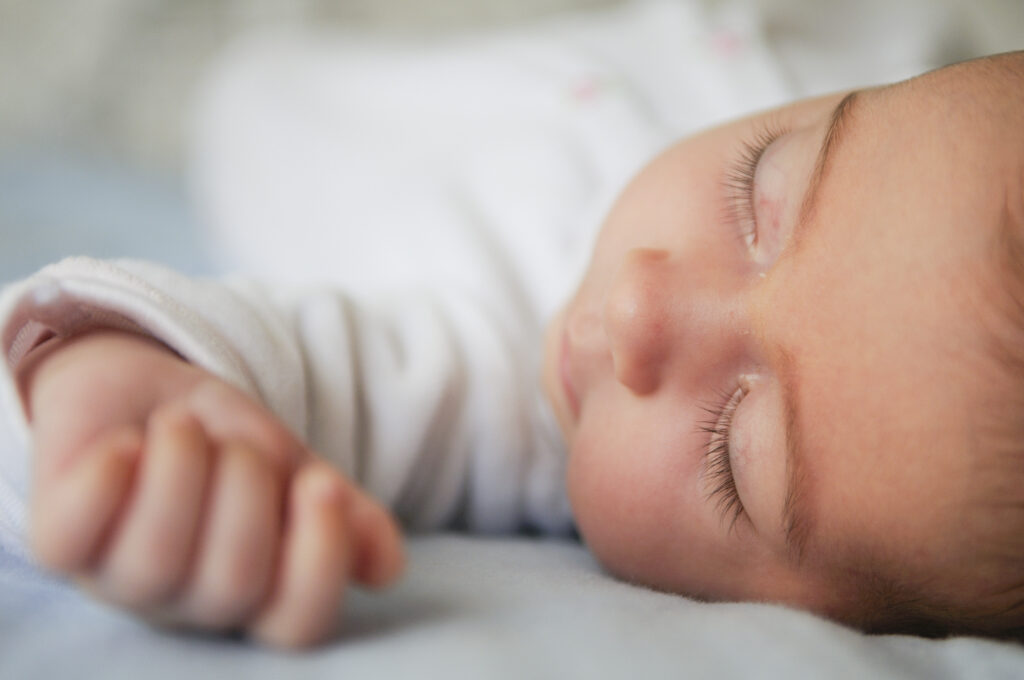Ensuring babies sleep safely is super important for caregivers and parents. By sticking to recommendations from trusted organizations like the Centers for Disease Control and Prevention (CDC), we can lower the risk of sleep-related problems that could harm infants, like sudden infant death syndrome (SIDS). Simple things, like putting babies on their back to sleep and using a firm mattress, make a big difference in keeping them safe while they sleep and helping them grow well. These tips set the stage for understanding the basics of baby sleep safety from the CDC, giving caregivers peace of mind and keeping infants healthy.
The CDC gives us lots of advice for making sure babies stay safe during sleep. One big rule is always putting babies on their back to sleep. This simple step really cuts down on the chance of SIDS. They also stress using firm surfaces, like a crib mattress, to prevent suffocation from soft bedding. They recommend keeping babies in the same room as you for at least the first six months to a year, making it easier to keep an eye on them and respond if needed. Following these suggestions helps caregivers create a safe and loving sleep environment for their babies, which is essential for their well-being.

Key tips for ensuring your baby sleeps safely and soundly:
- Back to Sleep: Always place your baby on their back when they sleep, whether it’s during naps or at night. This greatly reduces the risk of sudden infant death syndrome (SIDS).
- Firm Sleep Surface: Use a firm mattress in a crib or bassinet. Avoid soft bedding or surfaces, as they can be dangerous for your baby.
- Keep it Clear: Remove pillows, blankets, stuffed animals, and other loose items from the crib. These things can block your baby’s breathing or even suffocate them.
- Room Sharing: Consider having your baby sleep in your room for the first six months to a year. This practice reduces the risk of SIDS and makes nighttime care easier.
- Temperature Control: Make sure the room where your baby sleeps is at a comfortable temperature. Dress them in light clothing and avoid covering their head to prevent overheating.
- Safe Swaddling: If you choose to swaddle your baby, do it correctly using lightweight, breathable blankets. Stop swaddling once your baby starts rolling over.
- Avoid Overheating: Keep an eye on your baby’s clothing and bedding to prevent them from getting too hot.
- Breastfeeding: If possible, breastfeed your baby. It’s linked to a lower risk of SIDS.
- Pacifier Use: Offer a pacifier when putting your baby down to sleep. Studies suggest it may reduce the risk of SIDS.
- Regular Check-ins: Periodically check on your sleeping baby to make sure they’re okay. Avoid using sleep positioners or other devices that claim to prevent SIDS, as they haven’t been proven effective and could be dangerous.
By following these guidelines, you can create a safe sleep environment for your baby, helping them develop healthy sleep habits and giving you peace of mind as a caregiver. Stay updated on the latest recommendations from trusted sources like the American Academy of Pediatrics and the CDC.
Conclusion
Ensuring the safety of your baby during sleep is crucial for their well-being, and following the recommendations provided by trusted organizations like the CDC can significantly reduce risks such as SIDS. However, staying informed and educated throughout the journey of parenthood is essential. That’s why Guiding Star offers a range of pregnancy classes designed to provide expecting parents with comprehensive knowledge and support. By participating in these classes, caregivers can further equip themselves with the necessary skills and information to create a safe and nurturing environment for their baby from the very beginning.


